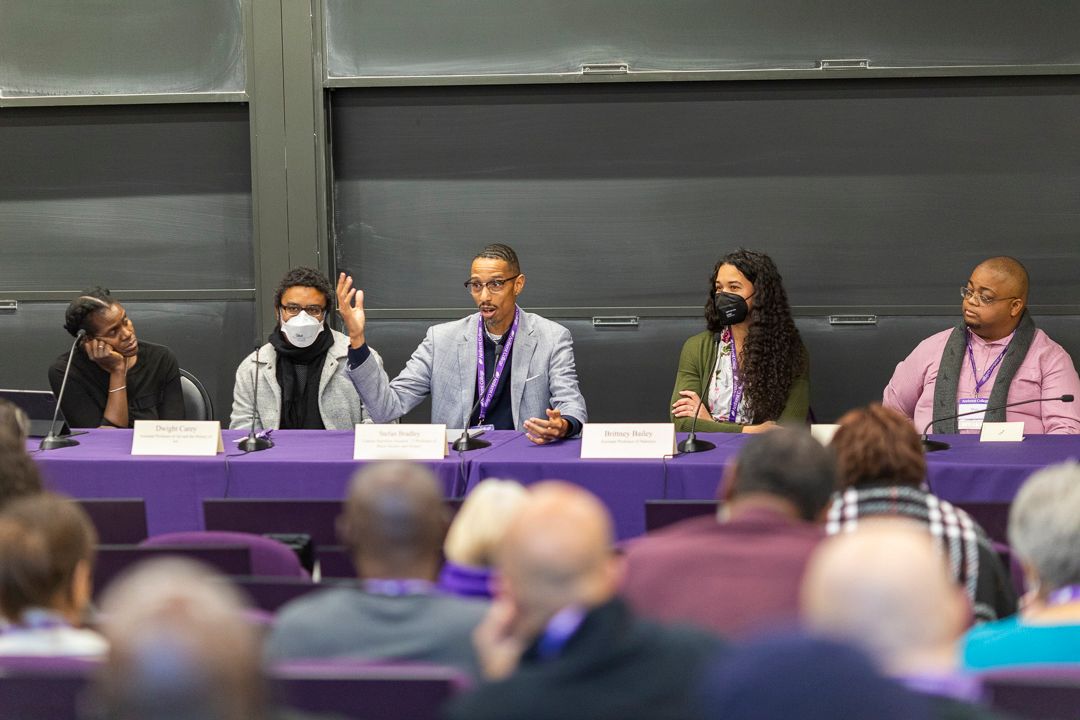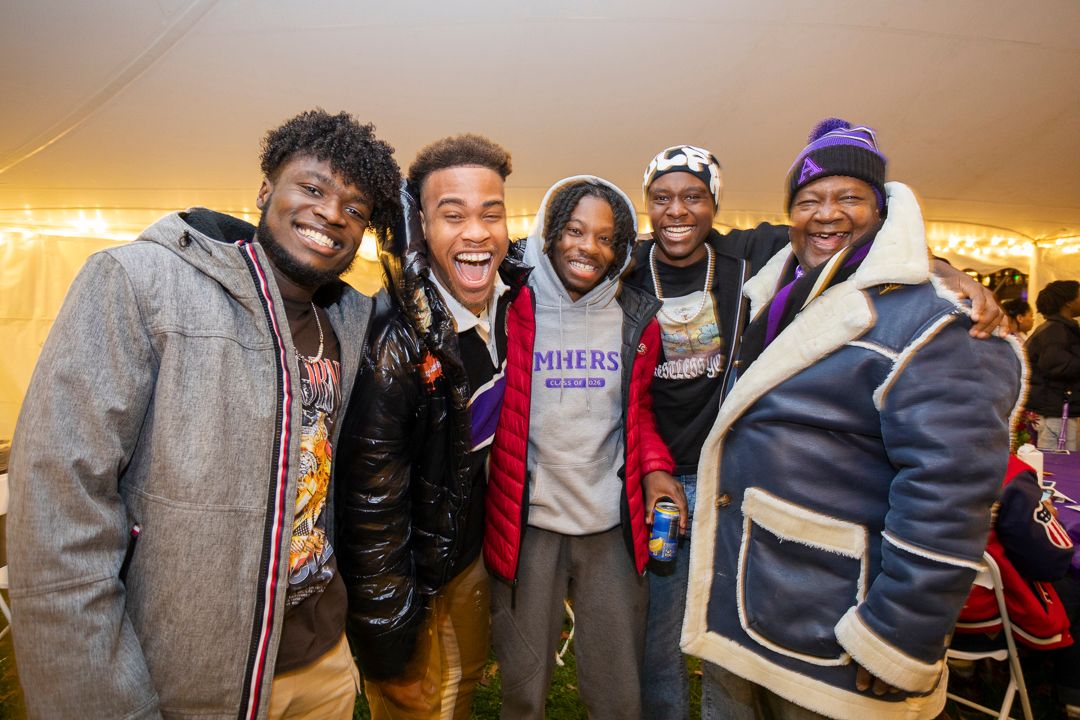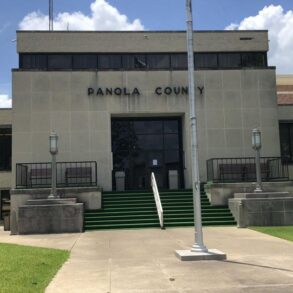Black Alumni Weekend — a biennial opportunity for connection, community, and celebration for the college’s Black alumni — arrived earlier than usual this year.
While Black Alumni Weekend has historically been hosted in the spring, this year it took place in the fall, from Nov. 10 to Nov. 12 — the same weekend as Homecoming.
Planned in collaboration between Black Student Union and the Amherst Society of Black Alumni, the weekend featured a wide array of events, including a Homecoming football game tailgate for Black alumni, an alumni panel discussion on affirmative action, a commemoration for Gerald Penny ’77 (who drowned in 1973 during a college swimming test), as well as other smaller events and activities. Black alumni ranging from the class of 1972 to the newest graduates returned to Amherst to enjoy both the Homecoming festivities and the Black Alumni Weekend programming.
Many Black alumni in attendance said that they returned to the college, for one, because they wanted to keep in touch with its diverse community. “Amherst is a place that has always prioritized having a diverse student body and so continuing to be a part of that is a big part of what this place is about,” said Allen Williamson ’13.
Black Alumni Weekend allows this diverse community to build important bonds, he added: “To be able to meet people from so many different backgrounds and connect with people you otherwise wouldn’t be crossing paths with is a really beautiful opportunity and something that the college holds dear.”
Beginning Friday, alumni were welcomed back to the college to attend open classes and visit the college’s museums. The Mead Art Museum, the Emily Dickinson Museum, the Eli Marsh Gallery, and the Beneski Museum of Natural History were open for all-day visitation throughout the weekend.
Friday also featured The Civil War Tablets and Ancestral Bridges exhibit, which featured photographs of the first Black and Afro-Indigenous families to live in Amherst — many of whose members served in the Civil War as Union soldiers.
Friday’s main event, however, was a panel titled “Affirmative Action: Our Past and Our Future.” It featured several alumni in conversation with President Michael Elliott about the Supreme Court’s recent decision effectively ending racial preference in college admissions and the importance of diversity in higher education. The panelists were Paul Smith ’76, Pat Fitzgerald ’82, Nadia Biassou ’88, Chris Gillyard ’08, Joon Kim ’18, and Andrew Kim ’18.
Immediately after the panel, the college dedicated Seeley Mudd’s room 208 as the Williams Lounge, named after John I. Williams Jr. ’75 for his support for the college as a trustee and an advocate for Black community.

Friday’s closing event was a welcome dinner for Black alumni, in Ford Hall, with Elliott in attendance.
Saturday’s events were more closely tied with Homecoming — a Black alumni tailgate was hosted in conjunction with the football team’s game against Williams. The tailgate invited both Black alumni and students to foster connection and shared experiences.
This sense of community is a compelling reason for many alumni to return after graduating. “Ever since I was a student, I’ve felt at home in the Black community at Amherst, so it’s always been a desire to continue to see that flourish — that home within a home,” Timothy Adkins-Jones ’04 said.
Williamson, a former member of the basketball team, expressed similar sentiments. “I’ve tried over the years since I’ve graduated to come back, whether it’s a basketball game, a football game, or alumni weekend type of events,” he said.
Additionally, Black alumni explained that fostering a connection with Black students is an important aspect of alumni weekend. “[It’s important] to continue to create avenues of support between alums and current students, there’s a Black alumni-student network that we want to make sure continues to flourish,” Adkins-Jones said.
Many alumni referenced the huge improvement in the quality of the buildings and dorms — as well as mourning the loss of the Social Dorms, which were replaced by the Greenways.
Other Saturday events included “The Black Scholarly Tradition at Amherst.” Panelists included Professor of Statistics Brittney Bailey, Professor of Black Studies and History Stefan Bradley, Professor of Art and the History of Art Dwight Carey, and Professor of American Studies and Black Studies Jallicia Jolly.

In addition to educational lectures, the weekend included various cultural events. Barbershop and Books, a community building initiative spearheaded by CJ Mitchell ’25 and Professor of English Frank Leon Roberts, hosted a drop-in for alumni looking for a haircut or simply just to connect with other alumni and students. The initiative is based on the long-standing cultural impact of Black barber shops across the country.
A screening of “Team Dream,” a short documentary starring two women of color — 83-year-old Ann Smith and 77-year-old Madeline Murphy Rabb — was held on Saturday as well. The film depicts their journey from living in a segregated neighborhood to breaking boundaries by swimming competitively at the 2022 National Senior Games. The screening was followed by a panel discussion with their coach, Derrick Q. Mulligan and Rabb’s grandson, Free Rabb ’26.
To wrap up Saturday’s events, Charles Drew House hosted “A Black Homecoming Experience,” with music, food, and performances by Dance and Step at Amherst College, rapper Kiiren Jackson ’24, and The Brooklyn United Drumline.
Frank E. Thompson ’87, who attended the event, was happy to see how much the Black community at Amherst has grown since he first attended. “A couple of us were commenting how [back then] in order for us to have a gathering this large of Black students we’d have to invite students from UMass,” Thompson said.
Sunday morning began with a commemoration of Gerald Penny ’77, held in the Octagon. Penny drowned in Pratt Pool during the college’s mandatory swim test. The tragedy highlighted the deeply entrenched racist systems and structures at the college.
The commemoration was led by Bradley and featured remarks from Elliott, recently appointed Chief Equity and Inclusion Officer Sheree Ohen, Dean of Students Charri Boykin-East, and many of Penny’s classmates and friends.
Elliott’s opening remarks touched on the impact of the Black community at Amherst for Penny. “When Gerald Penny chose Amherst he did so in part because of the outreach from Black students here who warmly described the vibrant community of Black students eager for him to join — a home away from home,” Elliott said.
Penny’s classmates later shared their personal memories of Penny. Although most of his classmates didn’t know him for very long before he passed, they described the ways Penny has impacted them throughout their lives.
Robert Bellinger ’77, one of Penny’s classmates, recalled the first time he met Penny. “I remember my first meeting with him. He greeted me [he said] ‘Hi, I’m Gerald Penny. Though I’m a Penny, I’m worth much more than that.’ And another one he would say was, ‘I’m Gerald Penny, but you can call me Nickel, Dime, or Quarter,’” he recalled.
Richard Ammons ’74 was the advisor of James Hall when Penny lived there as a freshman. After his death, Ammons visited Penny’s hometown in New Orleans and described how Penny represented hope and ambition for his New Orleans community.
“[I] learned that he was very endeared and seen as a leading light in that community, and his death hit hard,” he said. “It continued to be felt by that community as well as in [the Amherst] community.”
After the recollections from Penny’s classmates, Bradley led a shared reading of former Professor of Black Studies Sonia Sanchez’s “A Poem of Praise,” a poem written for and about Penny.
In his closing remarks, Bradley emphasized the importance of recognizing and remembering Penny while looking to the future. “As you all move forward today, and when you go back to your homes, remember the idea of ‘Sankofa,’ that is, the ability to look back while we’re moving forward,” he said. “That’s the spirit from which we should operate.”
To cap off Black Alumni Weekend, the Hermenia T. Gardner Bi-Semester Christian Worship Service was held shortly after the commemoration. Adkins-Jones, who is a reverend, held a sermon in Chapin Hall as part of the ongoing bi-semester worship service designed by students to provide Christian worship centered around African-American religious traditions.

Reflecting on the weekend as a whole, Frank E. Thompson ’87 described how important it was to hold the weekend as a time to foster conversation between alumni and students. “There are issues that current students [at Amherst] are dealing with that Black alumni are uniquely qualified to help them with,” he said. “We’ve lived these same experiences.”
Thompson further outlined how many Black alumni don’t return to the college for general alumni events, but will always make and effort return for Black Alumni Weekend because of that sense of community,
“It’s an opportunity to bring those members of our community back into the fold and reconnect with them,” he said.
This post was originally published on this site be sure to check out more of their content.






